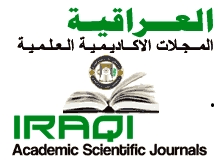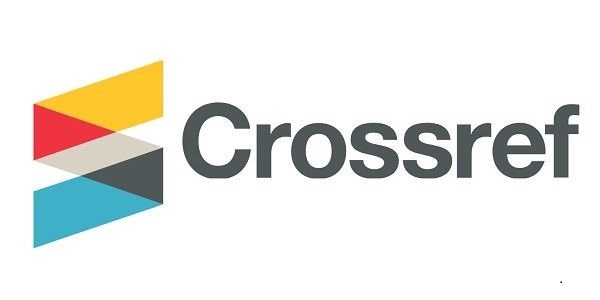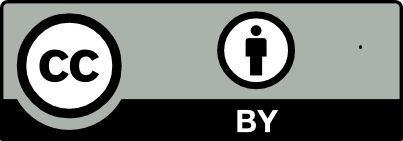Proposed Watershed Technique Based on Whale Optimized Algorithm for Medical Images Segmentation (WAWOA)
DOI:
https://doi.org/10.56714/bjrs.49.2.15Keywords:
Image segmentation, natural inspired algorithms, watershed technique, whale algorithmAbstract
Image segmentation is a way which applied to split an image for many parts. It will generate image smooth and easy to evaluate. A useful image segmentation technique is help the area authority in medical images. Also, a good segmented images are important in many medical fields like radiologist, pathologist of quick and successful analysis. It has used effectively in diagnosis for many disease. Nature inspired algorithms imitate the mathematical and innovative techniques for non-linear and actuality problems and can be achieved to segment or analyses the images. In this paper, a watershed as segmentation technique (WAWOA) has applied to segment the medical dataset image then proposed a whale based segmentation technique which can be used on medical bones image anyways the nature or style of the image. For fair analysis of these techniques, peak signal-to-noise ratio (PSNR), structural similarity index measure (SSIM) and Universal Image Quality Index (UIQI) of segmented images are analyzed by using MATLAB. The success of the proposed technique has confirmed with evaluated via comparing the obtained with outed results beside a standard watershed technique. The results showed this technique develops the segmentation of medical images and can help with better diagnosis. The evaluation results of our proposed technique show the success and efficiency of segmented images in high rates.
Downloads
References
D. Divyamary, S. Gopika, S. Pradeeba, M. Bhuvaneswari, 6th international conference on advanced computing and communication systems (ICACCS), Coimbatore, India (2020). Doi:https://doi.org/10.1109/ICACCS48705.2020.9074213
G. Hemanth, M. Janardhan, L. Sujihelen, 3th Conference on Trends in Electronics and Informatics (ICOEI) Tirunelveli, India (2019). Doi:https://doi.org/10.1109/ICOEI.2019.8862553
T. S. Sazzad, K. T. Ahmmed, M. U. Hoque, M. Rahman, International Conference on Electrical, Computer and Communication Engineering (ECCE), 2, 2019. Doi:https://doi.org/10.1109/ECACE.2019.8679240
M. I. Razzak, M. Imran, G.Xu, IEEE 23(5), 1911 (2019). Doi:https://doi.org/10.1109/JBHI.2018.2874033
A. Rehman, S. Naz, M. I. Razzak, F. Akram, M. Imran , Circuits, Syst., Signal Process 39(2), 757 (2019). Doi: https://doi.org/10.1007/s00034-019-01246-3
S. Deepak, P. M. Ameer, Computers in Biology and Medicine 111, 8 (2019). Doi:https://doi.org/10.1016/j.compbiomed.2019.103345
J. Tang, G. Liu, Q. Pan, Journal of Automatic Sinica 8(10), 2 (2021). Doi:https://doi.org/10.1109/JAS.2021.1004129
N. Abiwinanda, M. Hanif, S. Hesaputra, Springer, 183 (2019), Doi:https://doi.org/10.1007/978981-10-9035-6_33
A. G. Hussien, A. E. Hassanien, E. H. Houssein, S. Bhattacharyya, M. Amin, Springer , 79 (2019).
M. Sharma, P. Kaur, Archives of Computational Methods in Engineering 28, 1 (2021). Doi:https://doi.org/10.1007/s11831-020-09412-6
O. N. Oyelade, A. E. -S. Ezugwu, T. I. A. Mohamed, L. Abualigah, IEEE access 10, 16150 (2022). Doi:https://doi.org/10.1109/ACCESS.2022.3147821
T.Xu, L.Yao, L.Xu, Q. Chen, Z .Yang, Sustainability, 15(4), 1 (2023). Doi:https://doi.org/10.3390/su15043089
T. Sharma, , R. Nair, S. Gomathi, International Journal of Imaging Systems and Technology 2(1), 8 (2022).
S. Tamrakar , M. P. Parsai, International Journal of Scientific Research & Engineering Trends 8(6), 2097 (2022).
I. Levner, H. Zhang, IEEE Transactions on Image Processing 16(15), 1437 (2017). Doi:https://doi.org/10.1109/TIP.2007.894239
Y. Q, Sensors 22, 1.(2022). Doi:https://doi.org/ 10.3390/s22218202
L., F,, IEEE Trans. Neural Netw. Learn. Syst 26(5), 1019 (2015). Doi:https://doi.org/10.1109/TNNLS.2014.2330900
L, Z, , Transl. Oncol 12(2), 292 (2019). Doi:https://doi.org/10.1016/j.tranon.2018.10.012
Z. Yan, J. Zhang, Z. Yang, J. Tang, IEEE 9, 41294 (2022). Doi:https://doi.org/10.1109/ACCESS.2020.3005452
N, M, Neural Computing and Applications , 16245 (2020).
Q. V. Pham, S. Mirjalili, N. Kumar, M. Alazab, W. J. Hwang, IEEE transactions on vehicular technology 69(4), 4285 (2020). Doi:https://doi.org/10.1109/TVT.2020.2973294
Z. Yan, J. Zhang, Z. Yang, J. Tang, IEEE access, 9, 41294(2020). Doi:https://doi.org/10.1109/ACCESS.2020.3005452
E. Deniz, A. Şengür, Z. Kadiroğlu, Y. Guo, V. Bajaj, Ü. Budak, Health Inf. Sci. Syst 6(1), 18(2018). Doi:https://doi.org/10.1007/s13755-018-0057-x
H. Zuo, H. Fan, E. Blasch, H. Ling, IEEE Signal Process 24(3), 289 (2017). Doi:https://doi.org/10.1109/LSP.2017.2654803
T. Randen, J. H. Husoy, IEEE Trans. Pattern Anal. Mach. Intell 21(4), 291 (1999). Doi:https://doi.org/10.1109/34.761261
O. Charron, A. Lallement, D. Jarnet, V. Noblet, J. B. Clavier, P. Meyer, Comuters in Biology and Medicine 95(4), 43 (2018), Doi:https://doi.org/10.1016/j.compbiomed.2018.02.004
G.Kumar, A. Goswami .Applied Sciences., 13(3), 1658 (3023). Doi:https://doi.org/10.3390/app13031658

Downloads
Published
Issue
Section
License
Copyright (c) 2023 J. Basrah Res. (Sci.)

This work is licensed under a Creative Commons Attribution 4.0 International License.







